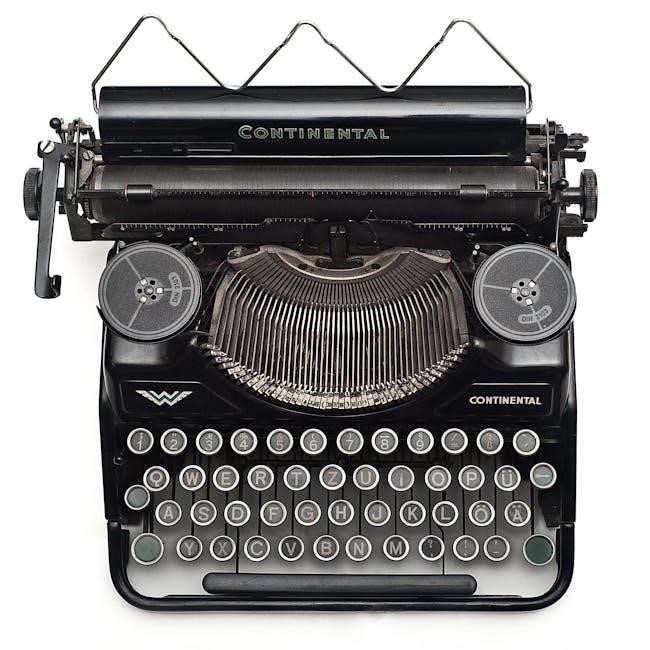Siphon Pump Manual: A Comprehensive Guide
Welcome! This manual provides comprehensive guidance on siphon pumps․ We cover everything from basic operation to troubleshooting․ Learn about different types, maintenance, and safety․ Whether for fluid transfer or emergency use, master siphon pump techniques for efficient and safe applications․
Understanding Siphon Pump Basics
A siphon pump is a device that moves fluids through a tube, typically in an inverted U shape, without the need for an external pump in many situations, especially in remote areas and other sites where electricity is difficult to obtain․
The siphon leverages gravity and atmospheric pressure to initiate and maintain the flow, offering a cost-effective alternative to traditional pumps․
The basic principle involves raising the liquid over an intermediate point between two reservoirs․
For a siphon to work, the outlet must be at a lower elevation than the inlet․ Siphons do not have moving parts, so there aren’t very many structural issues that can go wrong, but it’s important to inspect them regularly to ensure proper operation․
The pressure at the highest point must also be low enough to prevent cavitation․ Priming, or filling the tube, removes air and establishes a continuous liquid column․
Siphon pumps are used in diverse applications, from draining fish tanks to transferring fuel․ They are a natural and extremely simple machine that we take advantage of daily․
Understanding these basics is crucial for effective use and troubleshooting․
Types of Siphon Pumps
Siphon pumps come in various designs, each suited for specific applications․ The most basic type is the simple tube siphon, often used for transferring liquids between containers manually․
These rely entirely on gravity and initial priming to start the flow․ Hand-operated siphon pumps, like the Siphon King Jr․ mini pump, incorporate a pump mechanism to initiate and maintain the siphoning action, facilitating the rapid transfer of liquids․
Another type includes those with built-in siphon valves, used in more complex systems․ These valves help regulate flow and prevent backflow, ensuring efficient operation․ Some siphon pumps are designed for specific fluids, such as gasoline or chemicals, featuring materials resistant to corrosion and degradation․
For instance, chemical-resistant syphon pumps are used to deliver mild solvents, light oils, corrosives, dilute acid/caustics, and liquid waxes․
Additionally, there are auto-siphons, which automatically start and stop based on liquid levels, ideal for ponds or aquariums․ Understanding the different types allows you to choose the most appropriate siphon pump for your needs, ensuring safe and effective fluid transfer․
Manual Siphon Pump Operation: Step-by-Step

Operating a manual siphon pump involves a few key steps to ensure proper and safe fluid transfer․ First, ensure the source container is at a higher elevation than the destination container․ This elevation difference is crucial for the siphon effect to work․ Next, insert one end of the siphon hose into the source liquid, making sure it is fully submerged․
The other end of the hose should be placed in the destination container․ To start the siphon, you’ll need to prime the pump․ For some manual pumps, this involves repeatedly squeezing a bulb or pumping a handle to create suction․ This draws the liquid up the hose and over the highest point, initiating the flow․
Once the liquid starts flowing, the siphoning action should continue automatically due to gravity․ Monitor the flow and ensure the intake end remains submerged to prevent air from entering the system, which can break the siphon․ When you’re near your desired stopping point, raise the output end of the tubing above the source container level to halt the flow․
This simple process allows for efficient and controlled fluid transfer using a manual siphon pump․
Troubleshooting Common Issues: Siphon Not Working
Encountering a siphon that refuses to work can be frustrating․ Often, the primary culprit is improper priming․ Ensure the siphon is completely free of air․ Check all connections for airtight seals; leaks can disrupt the pressure balance needed for siphoning․ Submerge the intake end fully within the liquid source․
Another common issue is insufficient elevation difference between the source and destination containers․ Remember, the destination must be lower than the source for gravity to assist the flow․ Inspect the siphon hose for kinks or obstructions that could impede liquid movement․ Debris can clog the system, preventing proper suction․
If you’re using a manual pump, verify its components, such as valves and diaphragms, are functioning correctly․ Damaged or worn parts can compromise the pump’s ability to create suction․ If the siphon worked previously, consider external factors like temperature changes that might affect liquid viscosity or pressure․
Finally, ensure the liquid level in the source is high enough to keep the intake submerged throughout the operation․ Addressing these points systematically can resolve most siphon malfunctions․
Priming the Siphon: Ensuring Proper Start-Up
Priming is crucial for initiating siphon action․ It involves removing air from the siphon tube, creating a continuous liquid column․ Submerge the entire siphon tube in the liquid source, allowing it to fill completely․ This ensures no air pockets remain to disrupt the flow․
Alternatively, use a manual pump attached to the siphon tube to draw liquid through, displacing the air․ For some siphons, a built-in bulb or plunger allows you to create suction․ If the siphon has a valve, ensure it is properly positioned to facilitate priming․ Tilting the siphon can help release trapped air․
When using a garden hose as a siphon, completely fill it with water before placing one end in the source container․ Quickly seal the other end to prevent water loss․ Submerge the intake end and release the sealed end below the source level․ This should start the siphoning process․
Inspect the siphon tube for any cracks or leaks that could allow air to enter, compromising the prime․ A well-primed siphon ensures efficient and reliable fluid transfer․ Regularly check the prime during operation, especially with volatile liquids, to prevent interruptions․
Maintaining Your Siphon Pump
Regular maintenance ensures your siphon pump operates efficiently and lasts longer․ After each use, thoroughly clean the siphon tube and pump components to remove any residue․ Disassemble the pump, if possible, to clean internal parts․ Use appropriate cleaning solutions based on the fluids transferred, avoiding harsh chemicals that could damage the materials․
Inspect the siphon tube for cracks, kinks, or wear․ Replace damaged tubing immediately to prevent leaks and maintain optimal performance․ Check valves and seals for wear or damage and replace them as needed․ Lubricate moving parts, such as pistons or diaphragms, with a suitable lubricant to ensure smooth operation․
Store the siphon pump in a clean, dry place away from direct sunlight and extreme temperatures․ Properly coiled or hung tubing prevents kinks and extends its lifespan․ Periodically test the siphon pump to ensure it is functioning correctly․ Prime the pump and check for leaks or reduced flow rates․
Address any issues promptly to prevent further damage․ For siphon pumps used with corrosive fluids, perform more frequent inspections and cleaning․ Regular maintenance not only ensures reliable operation but also prevents contamination and prolongs the life of your siphon pump․
Preventing Syphoning in Pump Stations

Syphoning in pump stations can lead to operational inefficiencies and potential damage․ Implementing preventive measures is crucial for maintaining system integrity․ One primary strategy is to install anti-siphon valves or vacuum breakers in the discharge piping․ These devices introduce air into the line, breaking the siphon effect when the pump stops․
Ensure proper venting of the discharge line to prevent a vacuum from forming․ Vent pipes should be adequately sized and positioned to allow air to enter freely․ Design the piping layout to minimize the potential for siphon action․ Avoid creating high points in the discharge line where a vacuum can develop․
Regularly inspect check valves to ensure they are functioning correctly․ Malfunctioning check valves can allow backflow, contributing to syphoning․ Consider using control systems that monitor pressure and flow, automatically shutting down the pump if syphoning is detected․
Implement operator training programs to educate personnel on the causes and prevention of syphoning․ Emphasize the importance of proper valve operation and system monitoring․ By incorporating these measures, pump stations can significantly reduce the risk of syphoning, ensuring reliable and efficient operation while minimizing costly repairs and downtime․

Addressing Leaks and Trickling
Leaks and trickling are common issues in siphon systems, indicating potential problems that need prompt attention․ Start by visually inspecting all connections, fittings, and hoses for any signs of wear, cracks, or loose joints․ Tighten any loose connections and replace worn or damaged components․
Check the siphon’s seals and gaskets for deterioration․ Replace them if they appear dry, brittle, or deformed․ Ensure that the siphon is properly aligned and supported to prevent stress on the connections․ If the siphon is used with a tank, inspect the tank’s fittings and seals for leaks as well․
For persistent trickling, examine the siphon’s valve or shut-off mechanism․ It may not be sealing correctly, allowing a small amount of fluid to pass through․ Clean the valve seat and replace any worn parts․ If the siphon is self-priming, check the priming mechanism for proper function․
Consider using a sealant or thread tape on threaded connections to ensure a tight seal․ Monitor the siphon’s performance after repairs to verify that the leaks and trickling have been resolved․ Regular maintenance and timely repairs will help prevent leaks and trickling, ensuring efficient and reliable siphon operation while minimizing fluid loss and potential environmental contamination․
Siphon Pump Applications
Siphon pumps offer versatile solutions for fluid transfer across various industries and everyday scenarios․ In automotive maintenance, they facilitate the safe removal of gasoline from tanks, oil changes, and coolant replacement․ They are invaluable for transferring liquids without electricity, especially in emergencies or remote locations․
Aquarium enthusiasts use siphon pumps for water changes and cleaning gravel, maintaining a healthy aquatic environment․ In agriculture, they aid in irrigation, fertilizer distribution, and pesticide application, providing a cost-effective method for liquid management․ Construction sites utilize siphon pumps to remove water from trenches or flooded areas, ensuring a dry and safe working environment․
Homeowners find siphon pumps useful for draining water heaters, unclogging drains, and transferring liquids between containers․ They’re also employed in laboratories for transferring chemicals and samples, ensuring precision and safety․ Marine applications include bilge pumping and fuel transfer on boats, enhancing vessel maintenance․
Siphon pumps can also transfer water, oil, or other liquids, quickly and easily․ Their simplicity, portability, and lack of reliance on electricity make them essential tools for numerous applications․ From emergency fuel siphoning to routine maintenance tasks, siphon pumps prove to be practical and efficient solutions for liquid handling needs․
Safety Precautions When Using Siphon Pumps
When using siphon pumps, prioritizing safety is crucial to prevent accidents and ensure well-being․ Always wear appropriate personal protective equipment (PPE), including gloves and eye protection, to guard against chemical splashes or spills․ Work in a well-ventilated area to avoid inhaling harmful vapors, especially when handling gasoline or other volatile substances․
Ensure the siphon pump is compatible with the liquid being transferred to prevent corrosion or damage to the pump components․ Never siphon hazardous materials without proper training and equipment, as exposure can lead to severe health risks․ Keep a safe distance from open flames or potential ignition sources when working with flammable liquids, minimizing the risk of fire or explosion;
Inspect the siphon pump for any signs of wear or damage before each use, replacing worn hoses or faulty components to maintain optimal performance․ Avoid over-pressurizing the siphon system, as excessive pressure can cause leaks or ruptures․ Dispose of used fluids and contaminated materials properly, following local regulations and guidelines․
Store siphon pumps in a secure location, away from children and unauthorized personnel, to prevent misuse or accidents․ By adhering to these safety precautions, you can minimize risks and ensure a safe and efficient siphon pump operation, protecting yourself and the environment․

Where to Find Manuals and Support
Locating the correct manuals and support resources for your siphon pump is essential for proper operation and maintenance․ Start by checking the manufacturer’s website, as they often provide digital copies of manuals, troubleshooting guides, and FAQs․ Look for a specific model number on your pump to narrow down the search and ensure you access the correct documentation․
Many online retailers that sell siphon pumps also offer links to manuals or customer support pages․ Online forums and communities dedicated to DIY, plumbing, or specific pump types can be valuable resources for finding shared knowledge and solutions to common problems․
Consider contacting the manufacturer’s customer service directly via phone or email if you cannot find the manual online or have specific questions․ Local hardware stores or pump suppliers may also offer assistance or point you toward relevant resources․
Remember to keep a physical copy of the manual in a safe and accessible location for quick reference․ By utilizing these various resources, you can ensure you have the necessary information and support to effectively use and maintain your siphon pump․



